Do you find yourself constantly traveling here, there, and everywhere? Do you still want the companionship of a dog but without all the cleanup? In that case, a low-shedding dog that can be left alone for longer-than-average periods might be best.
And here’s a list of the best potential breeds:
- Italian Greyhound
- Lhasa Apso
- Boston Terrier
- Labradoodle
- Border Terrier
- Chihuahua
- Miniature Schnauzer
In this guide, I’ll talk further about how much alone time the above 7 breeds can handle as well as what their shedding habits are, and what grooming these dogs entails.
Recommended: Go here to see our top-rated dog hair blow dryers
1. Italian Greyhound
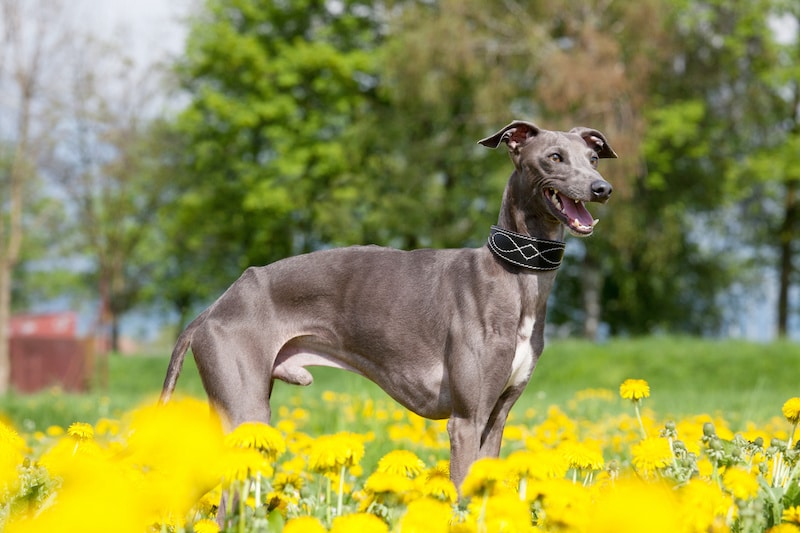
Long, lean, and leggy, the Italian Greyhound (or Iggy) sheds little due to its single coat and short fur. The size of the dog also helps. Although most Greyhounds are gargantuan, that isn’t the case for the Iggy. It’s considered the smallest of the sighthounds!
Do you have to go away on business, and you’re worried about how your Iggy will cope?
Admittedly, it does take this breed a little bit of time to get used to your jet-setting ways, but Iggies are adaptable and can learn to live with most situations.
When you are home, you’ll appreciate how easy it is to keep your Iggy well-groomed and looking his best. Use a soft-bristle brush or a rubber hand mitt on the dog’s coat once or twice a week.
The Iggy is considered a clean dog, so bathing him isn’t something that you’ll have to do too frequently either!
2. Lhasa Apso
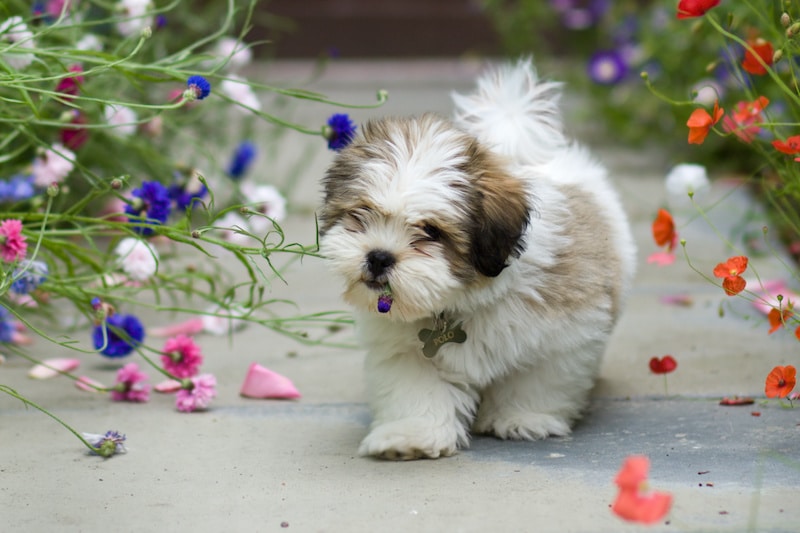
One look at a Lhasa Apso and you’d think this Tibetan dog would be a lean, mean, shedding machine. That’s actually anything but the case, as this is an incredibly low-shedding dog.
How is that, you ask? It mostly comes down to the density of the Lhasa Apso’s coat.
Further, the long fur works in this dog’s favor. The longer it takes a dog’s hair to progress through the four growth cycles, the more time the hair has on the dog’s body.
That said, the Lhasa Apso is double-coated and thus will blow its fur ahead of the summer and the winter. Be prepared for several weeks of increased hair cleanup.
What if you happen to be away at that time? The Lhasa Apso is a rather independent breed, so alone time won’t bother this canine too much.
Grooming a Lhasa Apso is the most challenging part of its care. You must commit to brushing daily or nearly daily with a pin brush. You’ll pull out loose fur before it can fall out naturally.
Also, you’ll reduce the rate of painful knots and tangles, both of which the Lhasa Apso is sadly prone to.
3. Boston Terrier

Are you back in the office and worried you need a dog-sitter?
Not for the Boston Terrier, you don’t. This tiny American pup can go up to eight hours without your presence before you risk coming home to an accident or two in the house.
As with any dog breed, however, the caveat is that you should always ensure your dog is protected from direct sunlight and has sufficient food and water while you’re away.
One of the best parts of owning a Boston Terrier is how easy they are to groom. The Boston Terrier is a small dog with very short fur, so grooming is fast and nearly effortless.
Brush your dog with a soft-bristle brush or a rubber brush several times per week. Bathing will occur even more seldomly, as the Boston Terrier does not have that stinky dog smell that most breeds do.
As for shedding, it’s not something the Boston Terrier does a lot. That’s due to the aforementioned short coat.
I should note that even though the Boston Terrier is not a double-coated breed, the dog still blows its coat (so to speak) with the seasons.
Increase your dog’s rate of brushing to every day at that point and clean up the house with a vacuum cleaner about weekly and you’ll get through these periods easily enough.
Recommended: Go here to see our top-rated dog hair blow dryers
4. Labradoodle
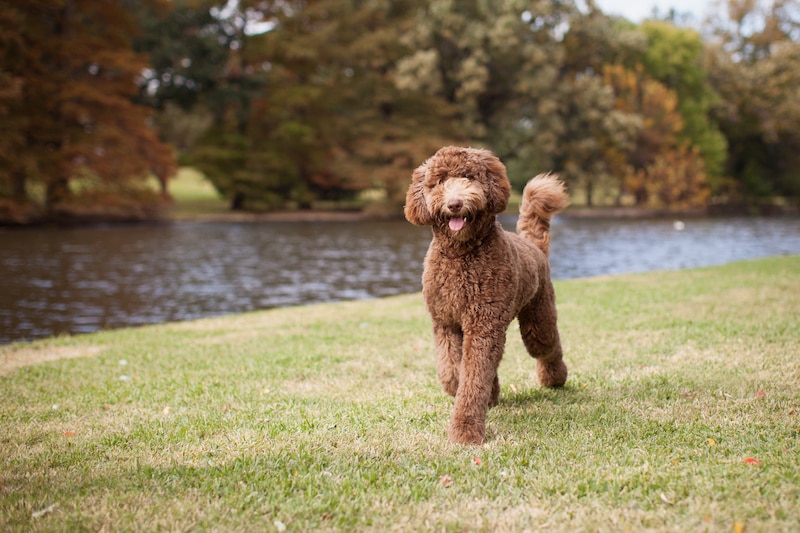
Although you’d probably never want to leave a Labradoodle alone because they’re just so darn cute, if you have to, this dog won’t begrudge you for it.
This is sort of surprising considering that both the Doodle’s parents–the Labrador Retriever and the Poodle– will experience intense separate anxiety when left alone for too long.
Not the Labradoodle though!
That said, it does depend on the individual dog and since Labradoodles are a mixed breed, their traits will depend largely on their lineage. In other words, how much Poodle or Lab the breed has.
The same is true for shedding.
For those Labradoodles that are mostly Poodle, they’ll shed very little. The Poodle is so low-shedding due to its wavy, wiry fur and single-coated status.
Labradors, on the other hand, are double-coated large dogs that shed seasonally. Further, Labs have shorter coats that make them shed more.
Even if your Doodle takes more after its Lab side though, it won’t shed excessively. And when it comes to grooming, the more Labrador, the better given its short coat.
It’s a tradeoff really. The more Labrador, the easier it can be to groom your Labradoodle. But the more Poodle, the less likely it is to shed. Either way, it’s an awesome breed.
Recommended: Go here to see our top-rated dog hair blow dryers
5. Border Terrier

The scruffy, fluffy working dog known as the Border Terrier is another four-legged companion to consider.
The Border Terrier features a wiry coat, but there are two layers to it. Thus, you should expect an uptick in shedding around the summer and winter. Neither shedding period should lead to mountains of fur bestowed upon your furniture, which is nice.
What about his preference for being alone?
The Border Terrier may need some training to get there but can eventually work his way up to spending about eight hours without anyone in the house with him.
Do save some time for grooming the Border Terrier. You should use a slicker brush to reach both layers of this dog’s scraggly coat, combing your pup at least every week. Increase the brushing rate during seasonal shedding.
Some Border Terrier owners will hand strip their dog’s fur. If you need a reminder, hand stripping entails you pulling out dead fur manually. A groomer can keep your Border Terrier trimmed if hand stripping is too difficult.
If you’re going to bathe this dog, you can do so only occasionally. I’d suggest saving bath time for seasonal shedding spikes, as washing out the dead fur helps with shedding.
6. Chihuahua
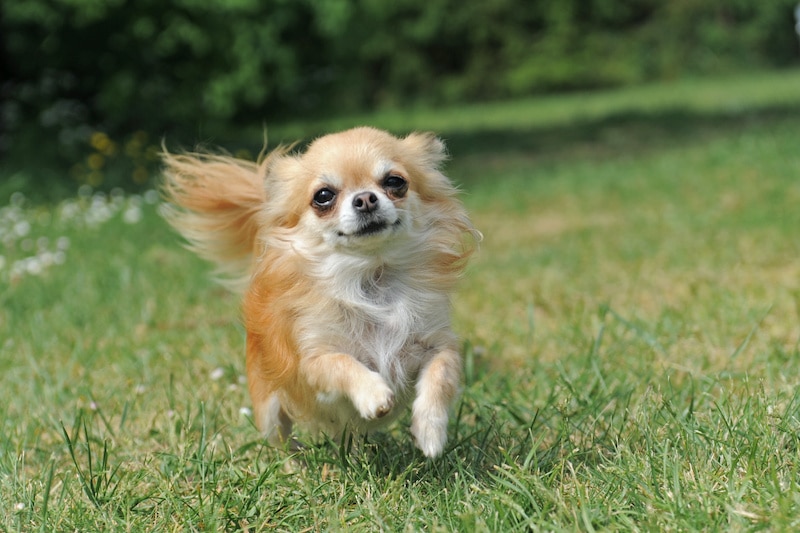
Tiny, cute, and spunky, you might be surprised that the Chihuahua can go a while without companionship, but it’s true!
Most people, when talking about Chihuahuas, are referring to the short-haired Chi. That’s not the only Chihuahua in town though. The long-haired Chi is another variety.
Naturally, this one will shed more than the short-haired Chi, but neither Chihuahua variety sheds overtly. That’s due to how small this breed is in general.
Some Chihuahuas are double-coated. This can accelerate their rate of shedding, but again, not to a high degree.
To control a Chi’s loose fur, use a slicker brush or a metal comb for a long-haired Chihuahua. Shorter-haired Chis have easy maintenance due to their very close-cropped fur.
7. Miniature Schnauzer
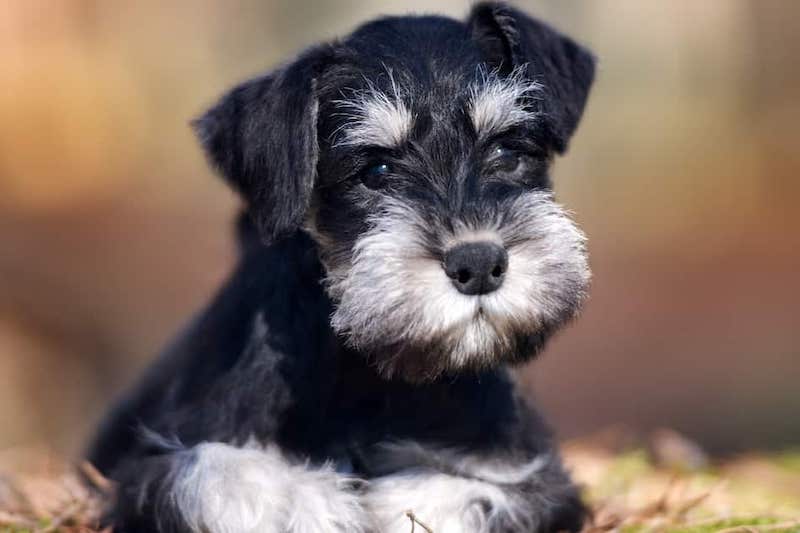
The teeny-tiny canine known as the Miniature Schnauzer is the last low-shedding dog on the list that can typically spend time on its own.
Although the Miniature Schnauzer is double-coated since it’s a smaller dog, the rate of shedding you’ll experience around the house even during seasonal shedding spikes is not severe.
Once you’re back home after your latest trip, sit down with your Miniature Schnauzer and dedicate some time to grooming this dog.
Three to five times per week, brush your pup. You can even comb him daily if you wish, and I’d recommend that during the seasonal shedding periods.
As for keeping your Miniature Schnauzer’s coat looking nice, you’d have to commit to hand stripping just as is the case for the Border Terrier.
Since you’re probably short on time anyway, it might be more conducive to bring your dog to a groomer about once every two months or so to keep the Miniature Schnauzer’s coat contained.
Bottom Line
Not many dogs can handle being alone for too long, but these low-shedding breeds might be better suited than others given their nature.
They don’t love your absence, of course, but can learn to tolerate it without destroying the house, having accidents, or getting overwhelmed by their separation anxiety.
That said, there are a couple of important caveats here.
First, how willing and able your dog is to be left alone during the day without howling, tearing your furniture to shreds, or going to the toilet inside (among other things) depends on the individual dog. Some breeds may be more or less suited to isolation, but this can vary greatly from dog to dog. So it’s important to monitor your dog.
It may also be worth speaking with a professional trainer early on to learn how to deal with separation anxiety as this can make a huge difference in how your dog behaves.
Second, and more importantly, just because a dog is more able to be left alone doesn’t mean you can be neglectful. Never leave your dog alone for longer than six-to-eight hours without someone to let them out of the house so they can go to the bathroom.
The American Kennel Club has put together a guide on how long you can leave your dog alone depending on their age. The time ranges from one hour for a puppy that’s less than 10 weeks old and suggests a maximum of six-to-eight hours for dogs six months and above.
Either way, your dog must be properly fed and hydrated at all times, regardless of whether you’re home or not. This is critical, regardless of the breed, as your dog depends on you.
I should also note that although the dog breeds I talked about today don’t shed much, that depends on how often you brush and bathe them as well as their diet, how much exercise they’re getting, and how healthy they are. See our complete shedding guide to learn more.

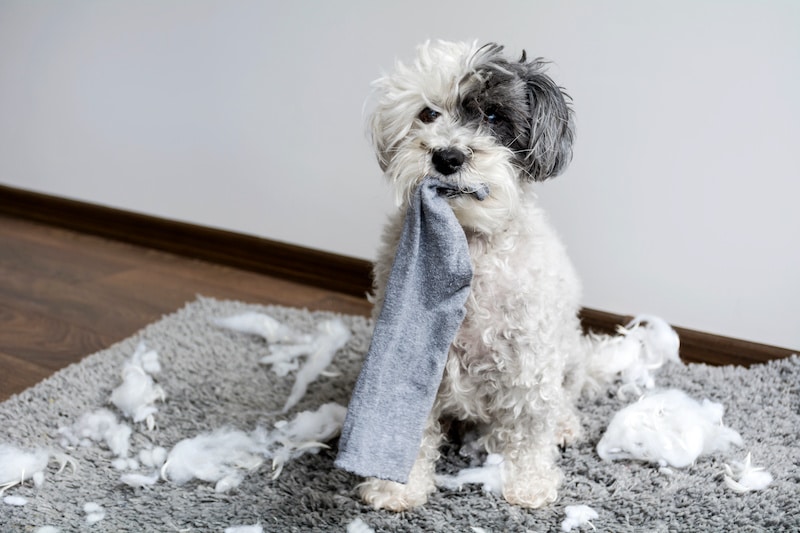










Please note: By submitting a comment using the above comment form, you confirm that you agree with the storage and handling of your data by this site as detailed in our Privacy Policy.